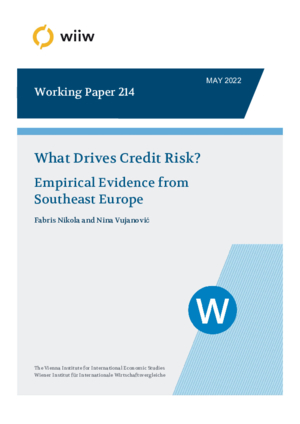What Drives Credit Risk? Empirical Evidence from Southeast Europe
Nikola Fabris and Nina Vujanović
wiiw Working Paper No. 214, May 2022
31 pages including 6 Tables and 4 Figures
Bank stability is an important aspect of financial stability, especially in bank-centric systems such as those in Southeast Europe. The financial crisis has shown that there is a particular need to monitor credit and other similar risks. Hence, it is important to analyse risks affecting the stability of both the banking sector and the financial system as a whole. To that end, central banks have developed macroprudential policies aiming to safeguard financial stability. However, little is known about the drivers of some financial risks. In that context, this study analyses the determinants of credit risk, which is the most prominent risk in the banking sectors of three selected Southeast European economies – Montenegro, Kosovo* and Bosnia and Herzegovina. Dynamic panel data techniques were applied to 48 banks, which represent almost the entire banking sectors in the respective countries. The empirical evidence has shown that both macroeconomic and bank-specific determinants represent influential factors driving credit risk in Southeast Europe. Particularly important macroeconomic factors affecting credit risk are business cycle and sovereign debt. On the other hand, bank size, capital levels, credit activity and profitability are the most prominent factors influencing credit risk in the region.
Keywords: Credit Risk, Financial Stability, Southeast Europe, Banking
JEL classification: G21, E37
Countries covered: Bosnia and Herzegovina, Kosovo, Montenegro, SEE
Research Areas: Macroeconomic Analysis and Policy
